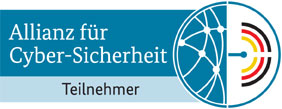Implementing ISO 27001:2022 Annex A.16 – Information Security Incident Management
We started the ISO 27001:2022 series with the promise of explaining how the 14 categories of controls can be implemented.
Today we address ISO 27001:2022 Annex A.16, “Information Security Incident Management” is crucial for organizations to effectively detect, respond to, and recover from security incidents. This annex provides guidelines for establishing an incident management process to minimize the impact of security breaches and ensure the continuity of business operations.
Understanding the Importance of Information Security Incident Management
Incident management is a fundamental aspect of information security, helping organizations mitigate the impact of security incidents and protect sensitive information assets. Annex A.16 emphasizes several key aspects:
- Timely Response: Promptly detecting and responding to security incidents minimizes their impact on operations and prevents further damage.
- Containment and Recovery: Implementing effective containment and recovery measures helps restore affected systems and data to normal operations.
- Continuous Improvement: Regularly reviewing and updating incident management procedures ensures their effectiveness and alignment with evolving threats and technologies.
Implementing Annex A.16 in Practice
Establishing Incident Management Procedures
Practical Examples:
- Incident Identification: Implement mechanisms to detect and identify security incidents, such as intrusion detection systems (IDS), security information and event management (SIEM) systems, and user reporting mechanisms.
- Incident Classification: Define criteria for classifying incidents based on severity, impact, and urgency to prioritize response efforts effectively.
- Incident Response Team: Establish an incident response team comprising key personnel responsible for coordinating and executing incident response activities.
Incident Response and Containment
Practical Examples
- Response Plan: Develop incident response plans outlining roles, responsibilities, and actions to be taken during security incidents, including containment, eradication, recovery, and communication procedures.
- Containment Measures: Implement measures to contain and mitigate the impact of security incidents, such as isolating affected systems, disabling compromised accounts, or blocking malicious traffic.
- Evidence Preservation: Preserve evidence related to security incidents for forensic analysis and investigation purposes, ensuring the integrity and admissibility of evidence.
Incident Analysis and Recovery
Practical Examples
- Root Cause Analysis: Conduct root cause analysis to identify the underlying causes of security incidents and implement corrective actions to prevent recurrence.
- System Restoration: Restore affected systems and data to normal operations following security incidents, using backup and recovery procedures to minimize downtime and data loss.
- Communication: Communicate with stakeholders, including senior management, employees, customers, and regulatory authorities, regarding the nature and impact of security incidents and steps taken for resolution.
Audit of Compliance with Annex A.16
Auditing compliance with Annex A.16 involves assessing the effectiveness of incident management procedures and practices. The audit process typically includes:
- Audit Preparation: Gathering documentation related to incident management procedures, incident response plans, and incident logs.
- On-site Audit: Assessing implementation of incident management controls through interviews, document reviews, and observations of incident response activities.
- Audit Findings: Analyzing audit findings and identifying areas of non-compliance or improvement opportunities.
- Reporting: Documenting audit results and providing recommendations for corrective actions to address identified issues.
- Follow-up: Monitoring implementation of corrective actions and conducting follow-up audits to verify compliance.
Conclusion
ISO 27001:2022 Annex A.16 underscores the importance of establishing robust incident management procedures to effectively respond to security incidents and minimize their impact on business operations. By implementing incident identification, response, containment, and recovery measures, organizations can enhance their resilience to security threats and ensure the continuity of critical business functions. Regular audits help assess compliance with Annex A.16 requirements and drive continuous improvement in incident management practices, enabling organizations to adapt to evolving security challenges effectively. Prioritizing information security incident management is essential for organizations seeking to protect sensitive information assets and maintain trust and confidence in their operations.
The post Implementing ISO 27001:2022 Annex A.16 – Information Security Incident Management first appeared on Sorin Mustaca on Cybersecurity.


